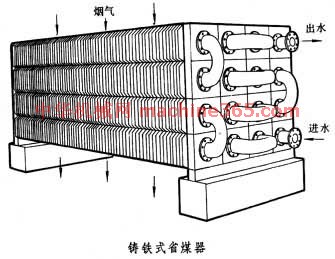1) steam coal


动力用煤
1.
The result bulletin and analysis of national supervision checking of steam coal product in the fourth quarter of year 2005;
2005年第4季度动力用煤产品质量国家监督抽查结果通报及分析
3) coal blending


动力配煤
1.
Application prospect of coal blending at the power-plant boiler;


动力配煤在电站锅炉的应用前景
2.
In view of the fuzzy and nonlinear characteristics of coal slagging process,a fuzzy neural network model is developed to evaluate the slagging characteristic of blended coal,with the slagging tendency index as the restriction condition of coal blending.
针对燃煤结焦过程的模糊性和非线性特点,采用模糊神经网络评估混煤的结焦特性,并用结焦倾向性指标作为动力配煤的约束条件。
4) Power Coal


动力煤
1.
The Evaluation of Power Coal Quality Based on Grey Relational Analysis Method;


基于灰色关联分析的动力煤质量评价
2.
The research results show that, among 33 collieries, the power coals from Hami, Shenfu, Jingyuan, Yaojie, Lu'an and Datong have more favorable environmental property.
评价结果表明:在33种商品动力煤中,哈密、神府、靖远、窑街、潞安和大同等煤种表现出了较优良的环境特性。
3.
The goal of increasing the consumption of blast gas and reducing the consumption of power coal was achieved.
对制约锅炉掺烧煤气量的不利因素逐项分析 ,制定合理的解决措施并实施 ,达到了多烧煤气、降低动力煤消耗的目
5) steam coal blending


动力配煤
1.
An research on optimization method of coal enterprises' steam coal blending;


煤炭企业动力配煤方案优化方法研究
2.
System design for optimization of steam coal blending based on combined application of Matlab/VB;
基于Matlab/VB混合编程的动力配煤优化系统设计
3.
Application of steam coal blending technology in coal sale of Kailuan;


动力配煤技术在开滦煤炭销售中的应用
6) power coal blending


动力配煤
1.
Optimization model for power coal blending based on genetic algorithm;


基于遗传算法的动力配煤模型
2.
Multioptimization technology for power coal blending;


多元优化动力配煤方案的研究
3.
The paper gives an analysis of the state-of-art of power coal blending and the feasibility of coal blending by use of weighted mean and based on an actual example, it describes the solution for some restricting conditions and variation problems identified in power coal blending by use of program solving tool in Excel.
分析了动力配煤研究现状和运用加权平均进行配煤的可行性。
补充资料:动力机械: 省煤器
布置在锅炉尾部烟道内加热给水的部件。它的作用是吸收锅炉尾部烟气中的部分热量﹐降低排烟温度﹐以节省燃料。现代锅炉一般都有省煤器。省煤器一词来源于燃煤锅炉﹐对于燃油﹑气和其它燃料的锅炉习惯上也称为省煤器。省煤器按出口水是否汽化分为沸腾式和非沸腾式。沸腾式的省煤器的沸腾率(出口水中汽化部分的质量百分数)不应超过20%﹐过大会增加流动阻力﹐甚至会出现管组中各管流量交替脉动﹐使省煤器振动﹐从而造成损坏。中压锅炉的省煤器常为沸腾式﹐其它压力的锅炉则常为非沸腾式。省煤器按结构和材料又可分为铸铁式和钢管式。铸铁式省煤器(见图 铸铁式省煤器 )强度不高﹐用于压力小于2.5兆帕的锅炉。为了加强传热﹐管外有大量鳍片。铸铁式省煤器承受振动和冲击的能力较差﹐故不能用作沸腾式﹔但耐腐蚀性能良好﹐可用于给水未经除氧的工业锅炉。钢管式省煤器不受压力限制﹐可以用作沸腾式﹐一般由外径为32~51毫米的碳素钢管制成。有时在管外加鳍片和肋片﹐以改善传热效果。钢管式省煤器由水平布置的并联弯头管子(习称蛇形管)组成。
)强度不高﹐用于压力小于2.5兆帕的锅炉。为了加强传热﹐管外有大量鳍片。铸铁式省煤器承受振动和冲击的能力较差﹐故不能用作沸腾式﹔但耐腐蚀性能良好﹐可用于给水未经除氧的工业锅炉。钢管式省煤器不受压力限制﹐可以用作沸腾式﹐一般由外径为32~51毫米的碳素钢管制成。有时在管外加鳍片和肋片﹐以改善传热效果。钢管式省煤器由水平布置的并联弯头管子(习称蛇形管)组成。
 )强度不高﹐用于压力小于2.5兆帕的锅炉。为了加强传热﹐管外有大量鳍片。铸铁式省煤器承受振动和冲击的能力较差﹐故不能用作沸腾式﹔但耐腐蚀性能良好﹐可用于给水未经除氧的工业锅炉。钢管式省煤器不受压力限制﹐可以用作沸腾式﹐一般由外径为32~51毫米的碳素钢管制成。有时在管外加鳍片和肋片﹐以改善传热效果。钢管式省煤器由水平布置的并联弯头管子(习称蛇形管)组成。
)强度不高﹐用于压力小于2.5兆帕的锅炉。为了加强传热﹐管外有大量鳍片。铸铁式省煤器承受振动和冲击的能力较差﹐故不能用作沸腾式﹔但耐腐蚀性能良好﹐可用于给水未经除氧的工业锅炉。钢管式省煤器不受压力限制﹐可以用作沸腾式﹐一般由外径为32~51毫米的碳素钢管制成。有时在管外加鳍片和肋片﹐以改善传热效果。钢管式省煤器由水平布置的并联弯头管子(习称蛇形管)组成。
说明:补充资料仅用于学习参考,请勿用于其它任何用途。
参考词条